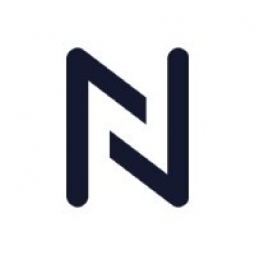技术
- 应用基础设施与中间件 - 数据交换与集成
- 应用基础设施与中间件 - 中间件、SDK 和库
适用行业
- 医疗保健和医院
适用功能
- 质量保证
用例
- 人员跟踪与监控
- 时间敏感网络
服务
- 系统集成
关于客户
Patient Hub 的客户主要是医院和医疗保健委员会。这些组织经常面临选择性护理积压的问题,并不断寻求提高能力和优化资源分配的方法。他们需要一种能够减少管理任务、提高患者参与度并与现有系统集成的解决方案。客户还看重实时监控预约数据的能力以及通过其首选渠道吸引患者的灵活性。借助 Patient Hub,这些组织可以实现这些目标,并为其患者、员工和整体运营带来积极的效益。
挑战
医疗保健部门经常背负着行政任务,这可能会限制员工和资源的能力。传统的患者参与方法,例如预约通知和等待名单验证,可能既耗时又低效。此外,预约信对实体邮件的依赖可能会导致延误和信息丢失。我们面临的挑战是找到一种解决方案,能够减轻员工的管理负担、提高能力并提高患者参与度,同时还能与现有医疗保健系统无缝集成。
解决方案
该解决方案以患者中心(Patient Hub)的形式出现,这是一个数字患者参与门户。该平台提供一系列服务,包括预约通知、等候名单验证、患者启动随访 (PIFU) 和 NHS 应用程序集成。它使患者能够自助服务,减轻工作人员的管理负担并提高整个医疗保健系统的能力。该平台还提供预约数据的实时监控,以便更好地分配临床资源。此外,它还提供数字预约信,消除了与邮政延误和信件丢失相关的问题。 Patient Hub 与患者管理系统 (PAS)、信任集成引擎 (TIE) 和其他医疗保健系统集成,确保无缝过渡和操作。
运营影响
数量效益

Case Study missing?
Start adding your own!
Register with your work email and create a new case study profile for your business.
相关案例.

Case Study
Hospital Inventory Management
The hospital supply chain team is responsible for ensuring that the right medical supplies are readily available to clinicians when and where needed, and to do so in the most efficient manner possible. However, many of the systems and processes in use at the cancer center for supply chain management were not best suited to support these goals. Barcoding technology, a commonly used method for inventory management of medical supplies, is labor intensive, time consuming, does not provide real-time visibility into inventory levels and can be prone to error. Consequently, the lack of accurate and real-time visibility into inventory levels across multiple supply rooms in multiple hospital facilities creates additional inefficiency in the system causing over-ordering, hoarding, and wasted supplies. Other sources of waste and cost were also identified as candidates for improvement. Existing systems and processes did not provide adequate security for high-cost inventory within the hospital, which was another driver of cost. A lack of visibility into expiration dates for supplies resulted in supplies being wasted due to past expiry dates. Storage of supplies was also a key consideration given the location of the cancer center’s facilities in a dense urban setting, where space is always at a premium. In order to address the challenges outlined above, the hospital sought a solution that would provide real-time inventory information with high levels of accuracy, reduce the level of manual effort required and enable data driven decision making to ensure that the right supplies were readily available to clinicians in the right location at the right time.

Case Study
Gas Pipeline Monitoring System for Hospitals
This system integrator focuses on providing centralized gas pipeline monitoring systems for hospitals. The service they provide makes it possible for hospitals to reduce both maintenance and labor costs. Since hospitals may not have an existing network suitable for this type of system, GPRS communication provides an easy and ready-to-use solution for remote, distributed monitoring systems System Requirements - GPRS communication - Seamless connection with SCADA software - Simple, front-end control capability - Expandable I/O channels - Combine AI, DI, and DO channels

Case Study
Driving Digital Transformations for Vitro Diagnostic Medical Devices
Diagnostic devices play a vital role in helping to improve healthcare delivery. In fact, an estimated 60 percent of the world’s medical decisions are made with support from in vitrodiagnostics (IVD) solutions, such as those provided by Roche Diagnostics, an industry leader. As the demand for medical diagnostic services grows rapidly in hospitals and clinics across China, so does the market for IVD solutions. In addition, the typically high cost of these diagnostic devices means that comprehensive post-sales services are needed. Wanteed to improve three portions of thr IVD:1. Remotely monitor and manage IVD devices as fixed assets.2. Optimizing device availability with predictive maintenance.3. Recommending the best IVD solution for a customer’s needs.

Case Study
HaemoCloud Global Blood Management System
1) Deliver a connected digital product system to protect and increase the differentiated value of Haemonetics blood and plasma solutions. 2) Improve patient outcomes by increasing the efficiency of blood supply flows. 3) Navigate and satisfy a complex web of global regulatory compliance requirements. 4) Reduce costly and labor-intensive maintenance procedures.

Case Study
Cloud-based healthcare solution for Royal Philips
Royal Philips wanted to launch its cloud-based healthcare solution HealthSuite Digital Platform in China to deliver services to help cope with challenges related to urbanization and population growth. Philips wanted to achieve this goal by combining mobile, cloud computing and big data technologies. To bring this platform and product to market, Philips required cloud computing and local technical service capabilities in China, in addition to a flexible IT infrastructure that could handle user requests.








